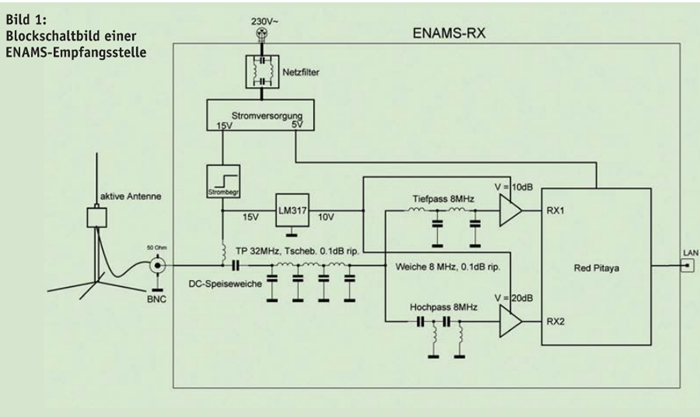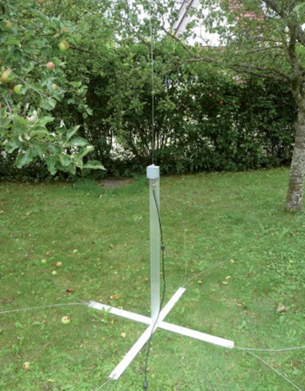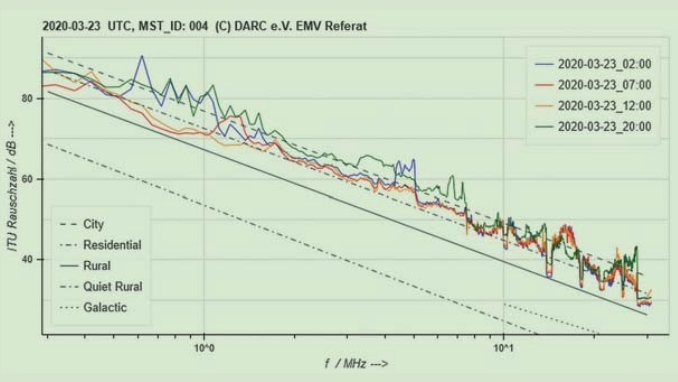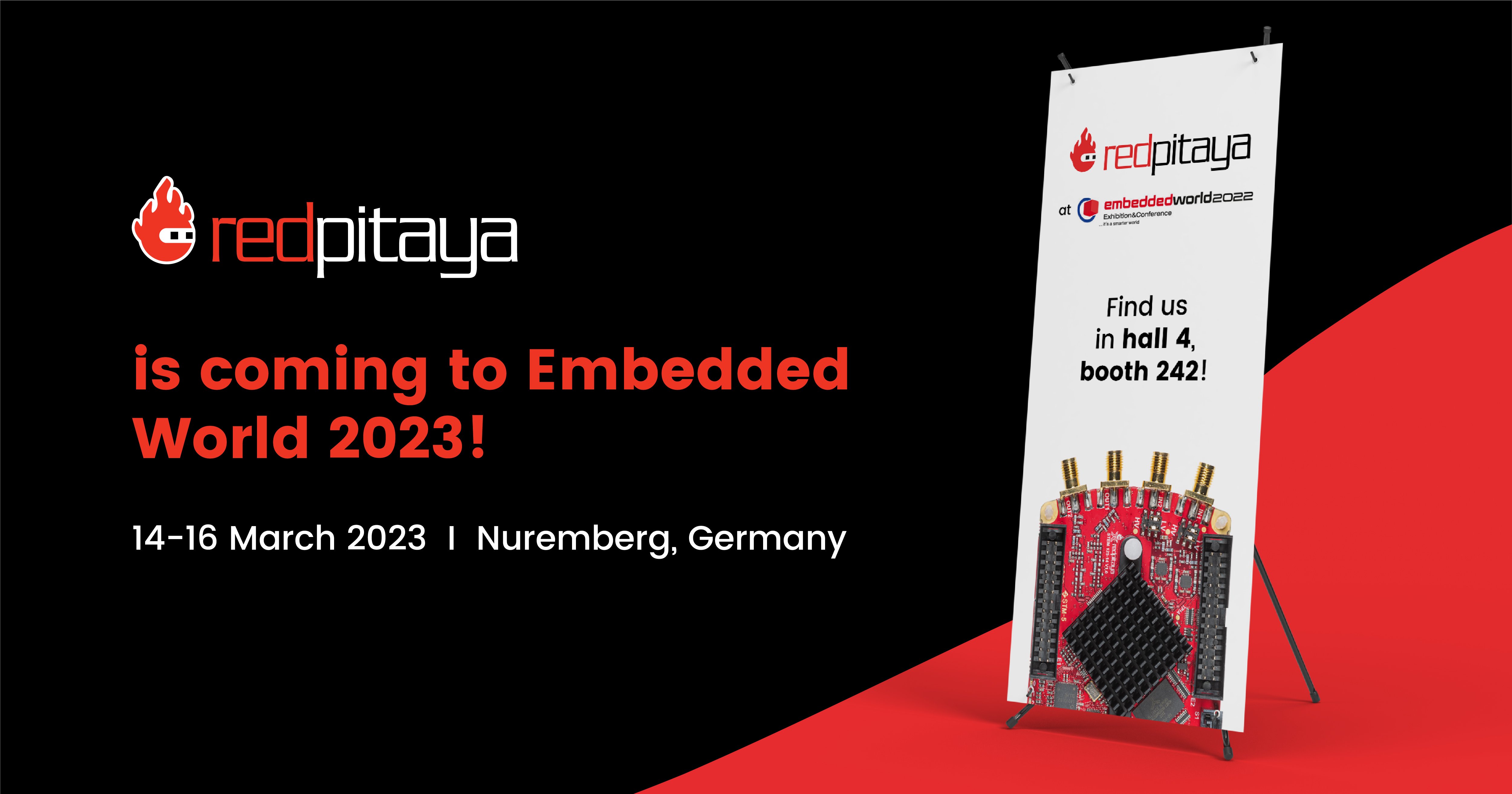Red Pitaya digitizer at the heart of the “ENAMS” Noise Monitoring System for HAMs
- Posted by
 Red Pitaya Team
Red Pitaya Team

ENAMS, short for Electrical Noise Area Monitoring System, is a system that consists of many receiving points that are being set up throughout Germany. It needs specific sensors to give a complete picture of radio signal disturbances across the country. These sensors regularly send data to a computer at a central station, where it's stored in a database. This setup helps observe and document long-term changes in electrical disturbances or "man-made noise." Learn about the system's design, including its built-in power supply and signal chain.
Everything automatically
The lead image shows the receiver designed around the Red Pitaya unit. The ENAMS receiver is highly user-friendly – no controls, not even a power switch. Just plug it in, and everything is automated, including server login. The block diagram (Image 1) shows the structure. Inside, there's a power source with 5 V for the Red Pitaya and a 15 V power supply for the antenna. Before everything, there's a filter that removes interference from the electrical mains with 230 V.
Image 1

Antenna with k = 1/m
The signal chain starts with the antenna (image 2), which is an active E-field antenna. It has a specific factor (k=1/m or 0 dB/m) and gets power through the coaxial cable. To make sure only the antenna, not the cable, gets signals, we use ferrite sleeves on the cable to block unwanted currents. The receiver comes with a 25 m cable with these sleeves (image 3), and no other cable can be used due to calibration. The antenna signal goes to the receiver's input part, a separate assembly in the ENAMS-Rx. It includes a DC feed switch, a low-pass filter (32 MHz), a frequency switch (8.0 MHz), and two amplifiers. The Red Pitaya receiver has two channels, so the lower frequency range gets less amplification (about 10 dB) than the upper range to improve system dynamics. Corrections are made during evaluation to equalize the gain difference. Calculations also ensure reception levels match those of a short monopole antenna according to ITU standards, crucial for determining the noise figure as per ITU guidelines.
Image2

Image 3

The Red Pitaya connects to the local internet router with a LAN cable, sending its data and serial number to a server in Baunatal without needing any setup. The server evaluates the data and creates graphics. Image 4 displays ITU noise levels in a small-town area throughout the day. The next sections briefly explain the antenna, assemblies, and software.
The network site
The Red Pitaya is connected to the local Internet router via a LAN cable and automatically delivers its data and its individual serial number to a server in Baunatal without the need for individual configuration. This is also where the evaluation is carried out and graphics are generated. Image4 shows the noise according to ITU in a small-town settlement area at different times of the day. The antenna and all components as well as the software are briefly described in the following parts.
Image 4

About ENAMS
“Electrical Noise Area Monitoring System”, or ENAMS for short, is a system that consists of many receivers built across all of Germany. These deliver the measured values cyclically to the computer of the evaluation station, where they are stored in a database. This results in a system for long-term observation, with which the development of the disturbance situation or thus also of the “man-made noise” is shown and documented. The system is supported by funds from DARC-Mitgliedschaft Pro in 2018. For more information about the ENAMS project, please visit: www.darc.de/mitgliedschaft/mitgliedschaft-pro.
Read more about it here: ENAMS.DE






